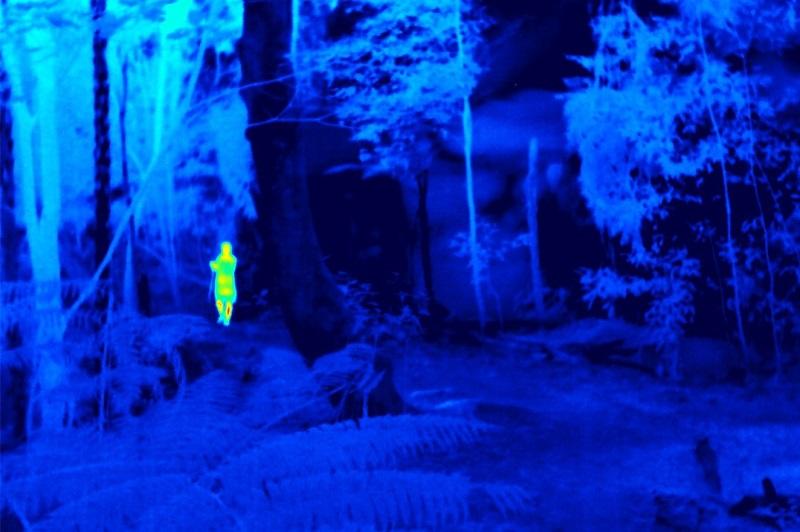
Thermal imaging uses heat signatures to form an image or video based on temperature differences. By applying infrared sensors and advanced smart algorithms, thermal imaging cameras allow you to see heat-emitting objects in complete darkness.
Thermal imaging has proved its worth in many fields. Firefighters use thermal imaging cameras that see smoke to detect fire hotspots and know where to direct water or foam. The cameras also help firefighters determine which areas to avoid when moving in low visibility conditions caused by smoke. They are invaluable when it comes to locating people trapped in a fire.
Police use thermal imaging cameras to track criminals. If there is a group of cars parked on the street, it is easy to see which cars have been there the longest (they are cooler) and which have just arrived (they are hotter). Thermal imaging cameras can detect heat signatures in total darkness and can also quickly detect suspects or clues even in daylight. They help to detect heat traces left by a recent suspect as he or she runs through fields and residential yards. The FLIR Breach PTQ136 can detect thermal footprints left by people for up to 30-60 seconds.
Law enforcement officers are increasingly called to respond to calls for service for endangered and missing persons, as well as emotionally disturbed persons or those with dementia. Thermal imaging cameras can significantly reduce the search time for these endangered and/or missing persons, allowing them to return safely and receive the urgent medical attention they desperately need.

Thermal imaging showing a house fire.

The thermal image shows the thermal signature of the aircraft components.
Department of Defense aircraft and vehicle mechanics sometimes use thermal imaging to detect faulty mechanical or electrical parts without disassembling the engines. To determine if something is wrong, normal operating temperatures are compared with thermal images.
The usefulness of thermal imaging is undoubted for detecting heat loss, structural defects, moisture and other faults in buildings. They help to quickly detect areas where heat or cool air may be escaping from the house. Imagine if the HVAC system has been improperly installed or if a pipe is leaking. A thermal imaging camera can easily detect the hottest or coldest parts of any machine that are breaking down, so there’s time to prevent a disaster. Wherever temperature is important, a thermal monocular can be useful.

Heat leak detection
The Coast Guard uses thermal imaging to detect smugglers or terrorists in ports and waterways. The images are of high quality in all weathers and in total darkness.
The US Department of Defence has used thermal imagery in a variety of ways over the decades. Now they are being used to detect COVID-19. In response to COVID-19, three Army programmes – the Army Rapid Equipping Force, the Soldier Programme Executive Office and the US Army Combat Capabilities Development Command C5ISR Centre – have led an initiative to use thermal imaging to check the body temperature of personnel entering military facilities.
Thermal imaging has significant advantages in terms of the safe distance between operators and subjects and the reduced manpower required. The technology, which does not require physical contact, processes information quickly. The result is faster flow to buildings and facilities. Inspection takes only seconds. Temperature can be measured at a distance of 6-8 feet using a tripod-mounted infrared sensor.
The AN/PVS-14 monocular night vision device is used by the US military and allies to detect people and objects emitting heat signals in the dark. The device can also be attached to weapons to target targets at night.
At Marine Corps Base Quantico, Virginia, Marines have begun testing the squad’s binocular night vision binoculars, which are said to be more capable than the AN/PVS-14 because they enhance depth perception and improve target visibility in extreme darkness or battlefield obscurations. In addition, the goggles allow Marines to operate vehicles at night, navigate through dark buildings or tunnels and engage targets after sunset. The goggles are currently being produced in limited quantities for further testing.

A Marine wearing night vision goggles is seen through the camera lens.
Different types of thermal imaging cameras are commercially available, mostly for hunting, construction and other purposes. These devices can be used to observe phenomena and objects that are invisible to the naked eye, so the applications are endless. Whether for hunting, nature observation, farming or conservation, the different models of thermal imaging cameras meet the expectations of even the most demanding users.


Add Comment